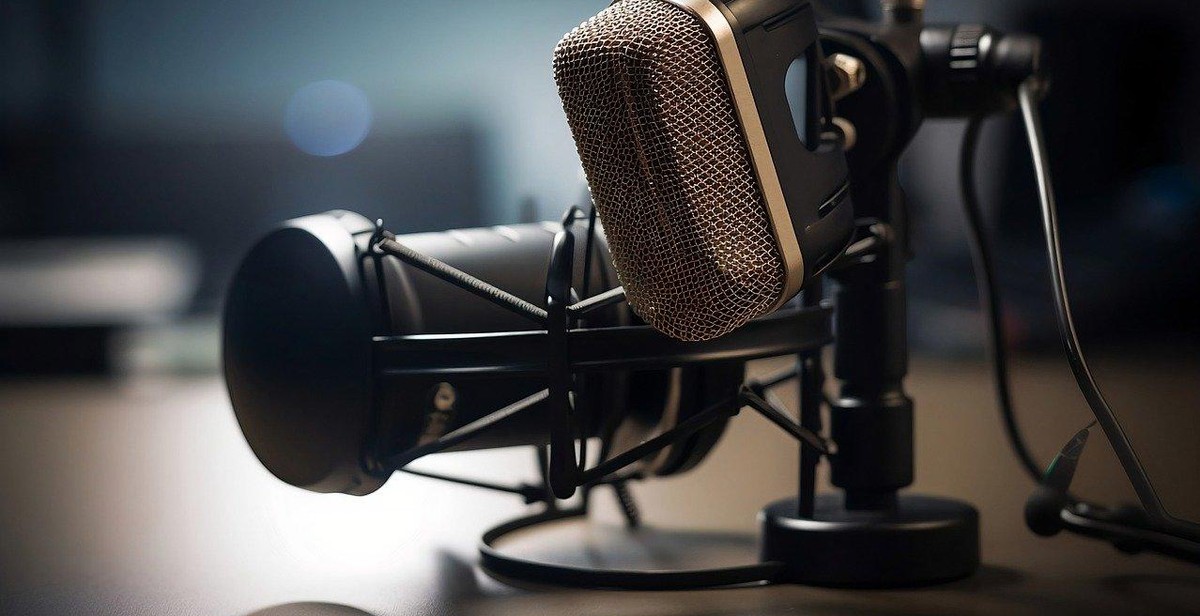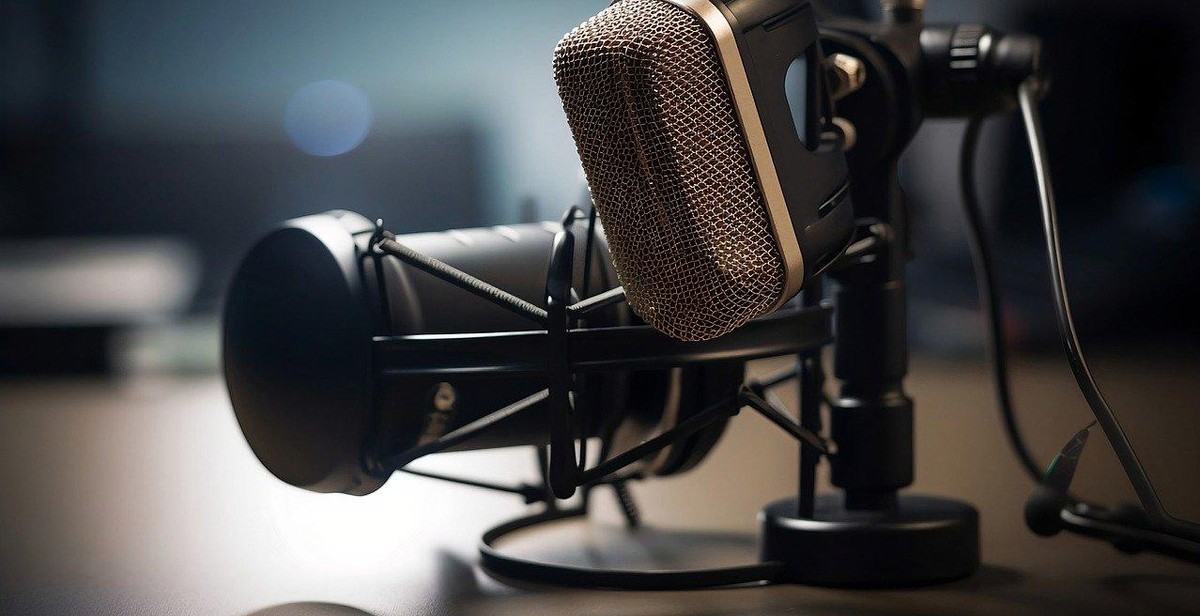How to Start a Podcast: Step-by-Step Guide to Recording and Publishing Your Show
Podcasting is an exciting way to share your thoughts, ideas, and interests with the world. Whether you’re a business owner, marketer, or just someone who loves to talk, starting a podcast can help you reach a wider audience and establish your authority in your niche.
Why You Should Start a Podcast
Podcasting offers numerous benefits that make it an attractive option for anyone looking to create content or grow their brand. Here are some of the reasons why you should start a podcast:
- Build a loyal audience: Podcasting allows you to connect with your listeners on a more personal level and build a dedicated following.
- Establish your authority: By sharing your knowledge and expertise on a particular topic, you can position yourself as an expert in your field.
- Expand your reach: Podcasting allows you to reach people who may not be interested in reading blog posts or watching videos.
- Monetize your content: You can monetize your podcast through sponsorships, affiliate marketing, or by selling your own products or services.
Starting a podcast may seem daunting, but with the right tools and resources, it’s easier than you might think. In this step-by-step guide, we’ll walk you through the process of recording and publishing your own podcast.
Step 1: Define Your Podcast Concept
Before you start recording your podcast, it’s important to have a clear concept in mind. This will help you stay focused and provide value to your listeners. Here are two important factors to consider when defining your podcast concept:
Choose a Topic
Choose a topic that you’re passionate about and that has an audience. Your podcast should be something that you enjoy creating and talking about. It’s also important to consider the market demand for your topic. Do some research to see if there are already podcasts on your topic and how popular they are. You can also use tools like Google Trends or BuzzSumo to see what people are searching for and sharing online.
Determine Your Target Audience
Once you have a topic, it’s important to define your target audience. Who do you want to reach with your podcast? Consider factors such as age, gender, location, and interests. Understanding your audience will help you create content that resonates with them and keeps them coming back for more.
- Choose a topic that you’re passionate about
- Consider market demand for your topic
- Define your target audience based on factors such as age, gender, location, and interests
By defining your podcast concept, you’ll be able to create content that is both enjoyable for you to create and valuable to your listeners. Once you have a clear concept, you can move on to the next step of recording your podcast.
Step 2: Plan Your Episodes
Once you have identified your niche, the next step in starting your podcast is to plan your episodes. This involves creating an outline and deciding on the length of each episode.
Create an Outline
Before you start recording your podcast, it is important to create an outline for each episode. This will help you stay organized and ensure that you cover all the important points you want to make. Your outline should include:
- The main topic of the episode
- The key points you want to cover
- The order in which you will cover these points
- The introduction and conclusion
Creating an outline will also help you stay on track during recording, and ensure that your podcast flows smoothly.
Decide on Episode Length
The length of your podcast episode will depend on your niche and the type of content you plan to cover. Generally, podcasts range from 20 minutes to an hour, but some can be shorter or longer.
When deciding on the length of your episode, consider your audience and their attention span. If your niche is highly technical or complex, shorter episodes may be more effective. If your content is more conversational or entertainment-focused, longer episodes may be more appropriate.
Ultimately, the length of your episode should be determined by the amount of valuable content you have to share, and what your audience is looking for.
| Pros | Cons |
|---|---|
| Shorter episodes are easier to consume | May not provide enough time to cover all important points |
| Longer episodes can provide more in-depth coverage | May be too long for some listeners |

Step 3: Purchase Equipment
Now that you have your podcast concept and format, it’s time to purchase the right equipment to ensure your show sounds professional and high-quality. The two main pieces of equipment you’ll need are a microphone and an audio interface.
Microphones
When it comes to microphones, there are many options to choose from. However, the most popular microphones used by podcasters are dynamic microphones, such as the Shure SM7B or the Electro-Voice RE20. These microphones are great for recording in a less-than-ideal acoustic environment, such as a home studio or an office space. They also have a cardioid polar pattern, which means they pick up sound from the front and reject sound from the sides and rear, making them great for isolating your voice from background noise.
Recommended Microphones:
- Shure SM7B
- Electro-Voice RE20
- Rode PodMic
- Audio-Technica ATR2100x-USB
Audio Interface
An audio interface is a device that connects your microphone to your computer and converts the analog signal from your microphone into a digital signal that your computer can understand. It also provides phantom power, which is needed for some microphones to function properly. There are many audio interfaces on the market, but a popular choice among podcasters is the Focusrite Scarlett series.
Recommended Audio Interfaces:
- Focusrite Scarlett 2i2
- PreSonus AudioBox USB 96
- Behringer U-Phoria UM2
- Mackie Onyx Producer 2-2
Investing in high-quality microphones and audio interfaces will ensure your podcast sounds great and is enjoyable for your listeners to listen to. Now that you have your equipment, it’s time to move onto the next step: recording your first episode!

Step 4: Record Your Show
Now that you have your podcast topic, format, and equipment ready, it’s time to start recording your show. Here are some steps to help you:
Choose a Recording Software
There are many recording software options available, both free and paid. Audacity is a popular free option that is easy to use and has many features. Other paid options include Adobe Audition and Hindenburg Journalist. Choose a software that suits your needs and budget.
Record Your Audio
Once you have your recording software set up, it’s time to start recording. Make sure your microphone is connected and functioning properly. Find a quiet place to record to avoid background noise. Consider using a pop filter to eliminate any plosives or harsh sounds.
When recording, speak clearly and at a consistent volume. Take breaks if needed and avoid rushing through your content. Don’t be afraid to re-record sections if necessary.
After recording, listen back to your audio to ensure it sounds clear and smooth. Edit out any mistakes or unwanted sounds using your recording software.
Remember, practice makes perfect. Don’t be discouraged if your first few recordings aren’t perfect. Keep practicing and refining your skills to create a high-quality podcast.

Step 5: Edit Your Audio
Editing your podcast audio is an important step to ensure high-quality sound and a professional finish. Here are some steps to follow:
Remove Unwanted Noise
Before you start editing, listen to your recording and identify any unwanted background noise, such as hums, hisses, or pops. Use a noise reduction tool in your editing software to eliminate these distractions from your audio. Be careful not to overdo it, as this can affect the quality of your audio.
Add Intro and Outro Music
Add intro and outro music to your podcast to give it a professional touch. Choose music that complements the tone and theme of your podcast. You can find royalty-free music online or hire a composer to create original music for your show. Make sure to adjust the volume of the music so that it doesn’t overpower your voice.
By following these editing tips, you can create a polished and professional-sounding podcast that will engage your audience and keep them coming back for more.
Step 6: Publish Your Show
After recording and editing your podcast, it’s time to publish it and share it with the world. Here are the steps you need to follow:
Choose a Podcast Hosting Platform
The first thing you need to do is choose a podcast hosting platform to store your audio files and generate your podcast’s RSS feed. Some popular options include:
- Libsyn: A reliable and user-friendly platform that offers various plans depending on your needs.
- Blubrry: A WordPress plugin that allows you to host your podcast on your own website.
- Podbean: A platform that offers unlimited hosting and a user-friendly interface.
Compare the features and pricing of each platform to choose the one that best suits your needs and budget.
Submit Your Show to Directories
Once your podcast is hosted, you need to submit it to directories to make it discoverable to your audience. Some of the most popular directories include:
- Apple Podcasts: The largest podcast directory that comes pre-installed on Apple devices.
- Spotify: A popular music and podcast streaming platform.
- Google Podcasts: Google’s podcast directory that can be accessed through the Google Podcasts app or Google Assistant.
Submitting your show to these directories will increase your visibility and reach a wider audience. Make sure to optimize your podcast’s title, description, and artwork to attract potential listeners.
| Note: | It may take some time for your podcast to be approved and listed on these directories. Be patient and continue to promote your podcast on social media and other channels to build your audience. |

Conclusion
Starting a podcast may seem daunting, but with the right tools and mindset, it can be a fun and rewarding experience. Follow the steps outlined in this guide, and you’ll be well on your way to recording and publishing your own podcast.
Remember the key takeaways:
- Choose a topic that you’re passionate and knowledgeable about
- Invest in quality equipment, including a microphone and headphones
- Choose a recording software that fits your needs and budget
- Plan your episodes and create an outline to keep your content organized
- Publish your podcast on a hosting platform and submit it to directories like Apple Podcasts and Spotify
Don’t forget to promote your podcast!
Use social media and other marketing channels to get the word out about your podcast. Engage with your listeners and encourage them to leave reviews and ratings.
Lastly, have fun!
Podcasting can be a great way to express yourself and connect with others. Enjoy the process and stay committed to creating quality content, and your podcast is sure to thrive.
